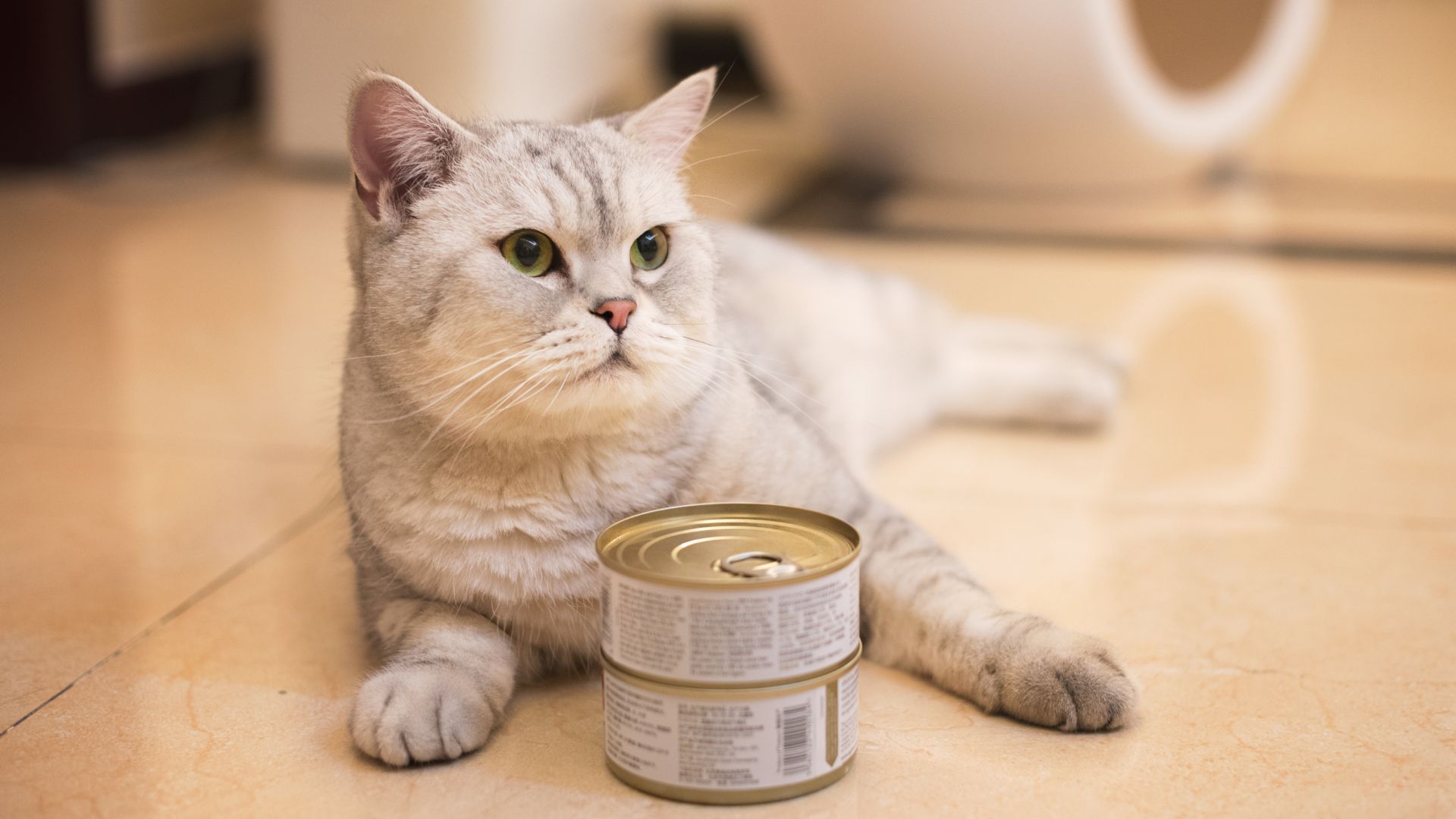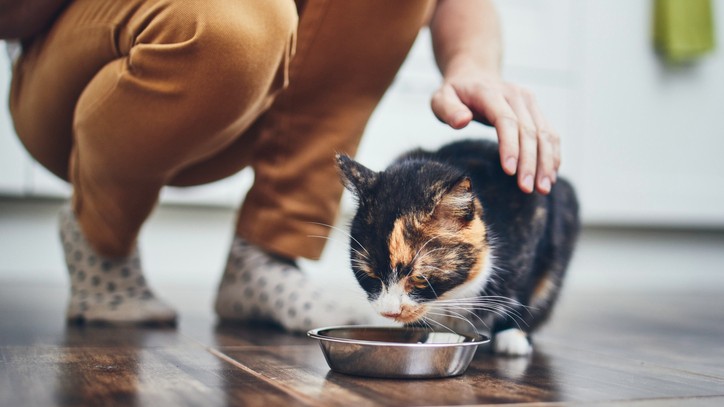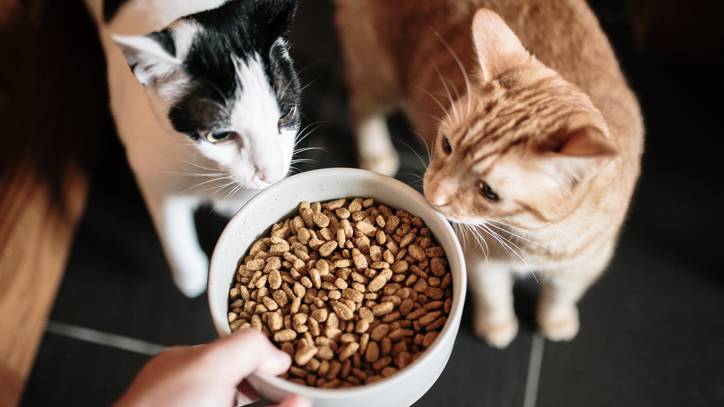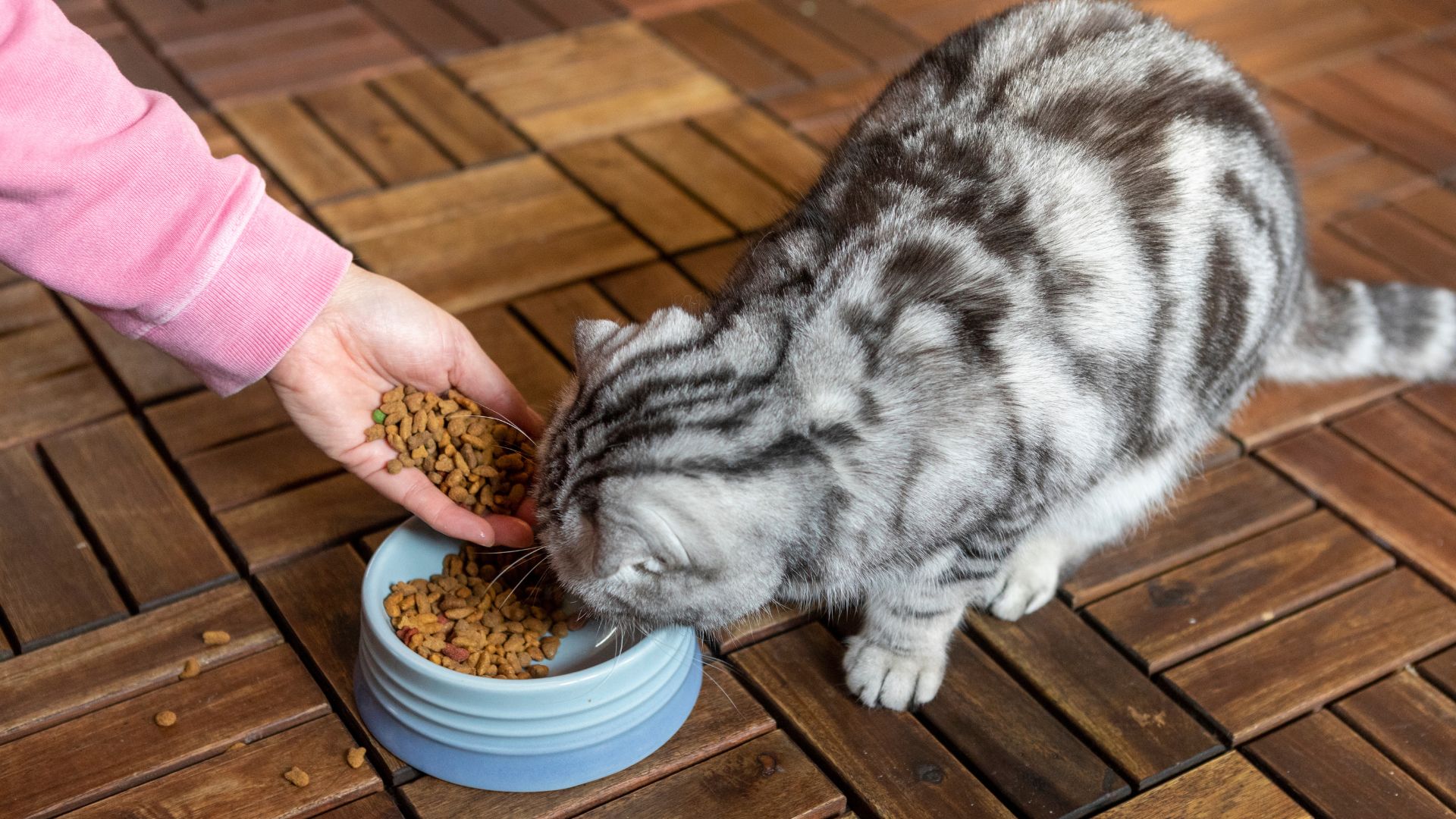Does cat food expire? Keeping your cat’s food fresh
Questioning, ‘Does cat food expire?’ These are our top tips on keeping cat food fresh for longer.

Does cat food expire? This a question that lots of pet parents ask themselves. Since it usually comes in a can or a sealed plastic pouch, it doesn’t look like the sort of thing that could go bad… However, it definitely does so you'll want to ensure your cat food's fresh.
The best cat food provides your feline with all the vitamins, minerals, and nutrients they need to stay healthy. But if it’s past the sell-buy date, your cat won’t reap the benefits. As well as reducing the food’s quality, it also poses a safety concern as it has an increased risk of bacterial contamination.
Whether you choose the best wet cat food or the best dry cat food, you need to make sure it’s stored correctly. If you don’t, it might go bad before it’s even reached the expiration date! Here’s everything you need to know about storing your cat food correctly and how long it lasts for:
Does cat food go bad and how can you tell?
Check your cat’s food bag or can for an expiration date. Both wet and dry that have passed their expiration dates will start to go bad, and they should be disposed of once the expiration date has passed.
Other signs to look out for include a change in smell, texture or appearance as the oils in the food begin to break down and it goes soft. Take a look at the packaging to see if there is mold or even bugs inside if the packaging is biodegradable.
Finally, watch your pet. If your cat's not eating this could indicate that the food has gone bad. (Refusal to eat can also indicate illness, so it’s important to schedule a vet visit if your cat is not eating!)
Food can go bad whether it is open or not. However, food is more likely to soil under certain conditions. Relevant factors include the packaging or container the food is stored in, how it is sealed, where it is stored and its exposure to air, moisture and high temperatures. If your cat food is kept in unsealed packaging and stored in a hot, humid room it will go bad faster.
Get the best advice, tips and top tech for your beloved Pets

How long does cat food last for?
How long cat food lasts for very much depends on the brand of food and how it is stored. For example, often high-quality food doesn’t have as many preservatives in it so it won’t last as long as food with chemicals preserving it.
But it also depends on the type of packaging and where the food is stored (food stored in high-quality packaging in the best pet food container in a dry, cool room will last longer).
Wet cat food
Unopened wet cat food can last from four months to three years. As as soon as a can of cat food is opened it should be sealed and kept in the fridge and used within five to seven days. It should only be kept out at room temperature (or in your pet’s bowl) for four hours; if the food is left out for longer than this, it should be thrown away.
Dry cat food
Dry cat food generally lasts for around six months or up to a year from its manufacture date if unopened, but once the seal is broken it should be used within 14 to 21 days.

Is it OK to feed expired cat food?
If there are no signs that the cat food has gone bad you may be tempted to feed your cat food that has gone past its expiration date. However this is not advised. Your cat will not only be losing out on important nutritional value, it’s not worth the risk to their health.
Eating food that has gone bad can lead to health problems because of nutrient deficiencies, as well as causing diarrhea in cats, nausea and an upset stomach. It is safer to keep your cat's food in date and throw any expired food away.
How to keep cat food fresh
Storing wet and dry cat food properly can extend its shelf life. Read the tips below to learn how to keep your cat’s food as fresh as possible.
Dry cat food:
- Make sure the food bag is sealed properly and not torn or in poor condition.
- Store the original food package in an airtight container such as a glass jar or metal container. You can use plastic containers, but there is a risk that the chemicals in the plastic may affect the food so make sure you watch out for wear and tear, wash containers properly and replace regularly.
- Store the food container somewhere cool and dry (at less than 80 degrees Fahrenheit or 26.6 degrees Celsius – not on the floor and not somewhere humid like the garage or basement). If temperatures exceed 120 degrees Fahrenheit (48 degrees Celsius), after two days, the degradation process will speed up significantly as heat can break down nutrients and cause bacteria to grow.
- It’s best to keep your cat’s food in its original container. If you must transfer it, save the label or otherwise record the manufacture date and brand details, expiration date and the date it was opened or stored.
- Wash the container between use so that there is no contamination with oils from the previous pack of food.
- Dry cat food can be stored in the freezer for up to six months in an airtight container such as a Ziploc bag, freezer safe plastic container or lidded glassware.

Wet cat food:
- Unopened cans of wet cat food should be stored at a temperature of 50 to 100 degrees Fahrenheit (10 to 37.7 degrees Celsius).
- Once opened cover and refrigerate wet cat food immediately.
- Cans of open wet cat food should be sealed with a plastic pet food lid. Food can also be stored in sealed zippered disposable bags or by covering a bowl or plate in the fridge.
- Opened cans should be kept in the fridge for five to seven days.
- Bowls of wet cat food should only be kept out for up to four hours at room temperature.
- Do not freeze unopened cans.
- Again, label all food carefully.
For more advice like this, read our features on changing cat food safely and why your cat won't eat dry food.
- Megan MilsteadStaff Writer

